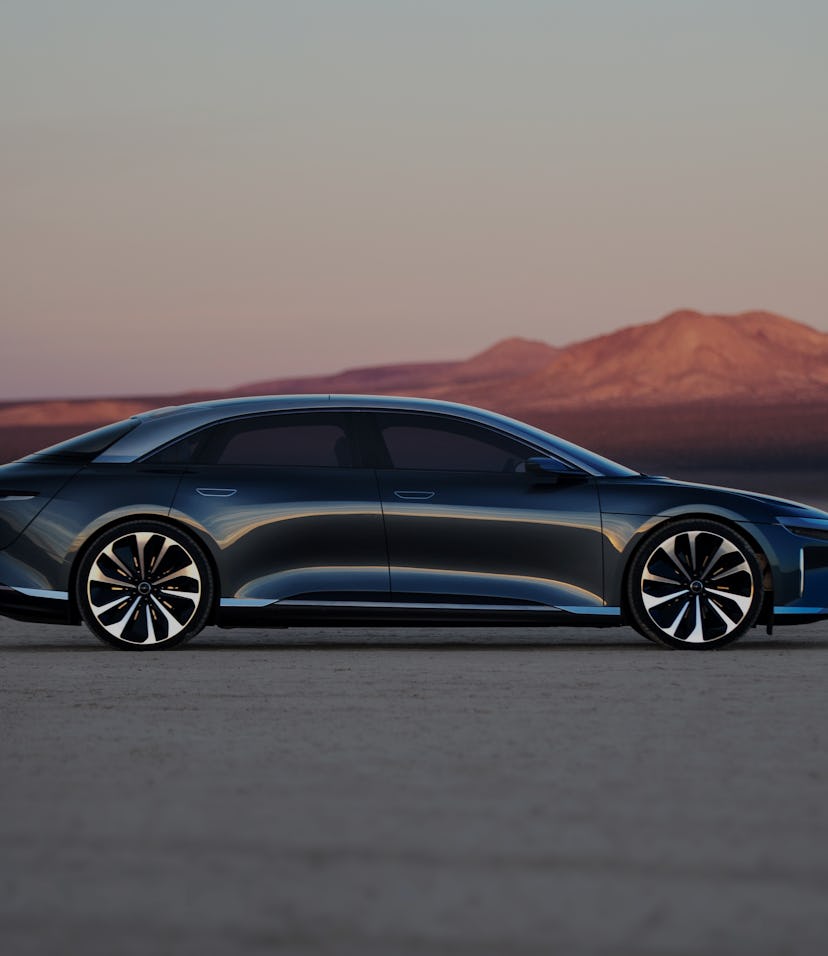Design
Lucid unveils the Air Dream Edition, a luxury EV that rivals the Tesla Model S
More power, more space, more money.

Lucid, a new EV company from California, took the wraps off of its Lucid Air luxury sedan via livestream (as is customary now). After a couple of minutes of sweeping, moody landscape shots, the camera eventually panned to Lucid CEO (and CTO) Peter Rawlinson. Right away, before dropping any of the juicy details, Rawlinson introduces Lucid as a company that can mass produce its battery and motor technology. Scaling up was a prominent theme throughout the presentation, but for now let’s talk about the car.
According to the company’s press release there are four Lucid Air packages:
- The Air, or the base model, starting at $80,000 and available in 2022
- The Air Touring, starting at $95,000 and available in late 2021
- The Air Grand Touring, starting at $139,000 and available in mid 2021
- The Air Dream Edition, starting at $169,000 and available in spring of 2021
As you can see, the Lucid Air is not an affordable family car by any means — it’s a full-blooded luxury vehicle made to compete with the best of them. There are the standout features, like the 500-mile range that the company teased last month, or the ultrafast charging, but given that Lucid has to compete with Tesla for a slice of the wealthy EV market, it’s no surprise that there are also plenty of creature comforts packed into every corner.
The drivetrain — When describing the drivetrain, Rawlinson begins by highlighting the 500-mile range that you can get with the Grand Touring and Dream Edition models of the Air (in perfect conditions, of course). This is accomplished with a large 110kWh battery pack on the aforementioned top-tier models while the lower tiers have to make due with a 72kWh pack that translates into a more modest 400-ish miles.
The motors, which Lucid says were designed in-house, can deliver up to 1,080 horsepower and go from zero-to-sixty in as little as 2.5 seconds with the Dream Edition. All the configurations use dual-motor designs (except maybe the base model, as shown in the chart below), but later in the presentation Rawlinson says that three-motor setups are also possible with the motor technology that powers the Air.
The power — Lucid also touted its 900 volt architecture, and this really caught my attention. That's about twice the voltage that Tesla motors run at, and this presumably a big part of the efficiency gains that the executive team wouldn’t stop talking about in the press conference. Such high voltages allow for efficient power transmission between the inverters and the motors, as well as super fast charging. You can apparently get to sixty percent charge with just 20 minutes of charging (though for which model is unclear). Also, as a perk for buying such an expensive electric car, Lucid has partnered with Electrify America and will foot the bill for your charging for three years.
The Lucid Air’s power system is also bidirectional, meaning that your car can feed power back into your house in case of a blackout, or just for removing stress on the grid. Apparently the Nissan Leaf was the only EV in the U.S. that could do this until Tesla announced the feature just a few months ago. If I’m going to buy tens of thousands of dollars worth of lithium polymer, I want to at least be able to power my house.
The money — It remains to be seen whether the company can carve out a space in the luxury price range just above the Model S (during a global pandemic no less). But for just $1,000 you can get your reservation in and be one of the first to try an all-new EV from an all-new EV maker. And if you can spend this kind of money on a first generation product, I say more power to you my friend. Please invite me to the caviar swimming party at your vineyard.